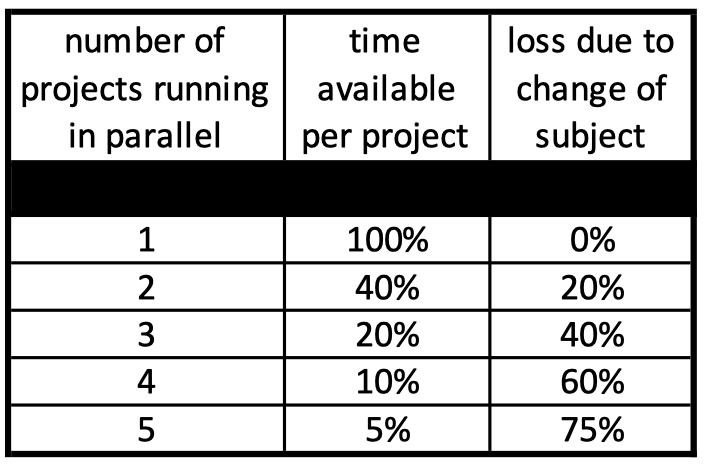
Multitasking: skill or myth?
Today we are busier than ever. Although technology has simplified our daily lives, devices have made our brains increasingly data-intensive and we have less time for everything else. The constant pressure to be productive is distracting us, making us stressed and overwhelmed. But successful people have long since realised that the key to productivity is focus and attention.
"The easiest way to get a lot done is to do one thing at a time."
/Samuel Smiles - 19th century Scottish writer/
What is multitasking?
Multitasking is the simultaneous performance of two or more activities at the same time. Basically it sounds good, you can do several things at the same time in a given unit of time. So what's wrong with that? Quite simply, that's not how our brains work, that's not how they're set up.
In scientific terms, multitasking assumes that a person can 'train' their prefrontal cortex (the part of the brain that allows focus, attention and prioritisation of tasks) to divide this focus between several things at once, which is physically impossible. In non-scientific terms, constantly shifting your attention between different tasks comes at a cost, which can be measured in your performance. You can burn up to 40% of your energy switching between tasks.

The arguments against
Jeff Sutherland (one of the creators of the SCRUM framework) in his book demonstrates why multitasking is bad for you with a very simple exercise that anyone can do at home, all you need is paper and pencil.
The task is: write down the Arabic numbers, the Roman numerals and the letters 1 to 10 of the alphabet as quickly as possible. The first time, write the Arabic number first, then the Roman number, then the letter, so the page you write on should look like this:
1 I A
2 II B
3 III C
We do it by writing down one line at a time. For reference, my result is 38 seconds.
Now, write the numbers and letters in columns, so first the Arabic numbers 1 to 10, then the Roman numerals I to X, and then the letters. My time with this method: 22 seconds. So simply by doing one task (one column) at a time, I almost halved the time needed to complete the task.
I understand, but!
"I am a busy senior manager, I have a lot of things to do at the same time, my team is running 13 projects at the same time."
My answer to this is: the Agile Manifesto was preceded by a gigantic survey of software projects of gigantic size and volume, one of the aims of which was to reduce the huge increase in development lead times, one of which, published by Gerald Wienberg, is both shocking and very instructive:

"Loss due to change of subject" is pure loss. So if we have 5 projects running at the same time, 75% of our work is wasted, meaning you can spend three quarters of your working day in the toilet. That's why we can't write rows and columns at the same speed in the above task, and that's the result of the physical limitations of our brains.
Can multitasking be avoided?
Of course, in today's world, where we are bombarded daily with different stimuli: TV, radio, internet, social media, mobile phones, it is almost impossible to avoid multitasking 100%. The point and the challenge here is to recognise and notice when we are doing more than one thing at once and to try to reduce the number of times we do it as much as possible.

So what can we do about it?
Some simple tips to avoid multitasking:
- Get enough rest!
- Try to get rid of all distractions, leaving only what you need to do the job on your desk!
- Plan your day!
- Pay attention to when you lose focus, and get into the habit of consciously resetting yourself to concentrated work every time!
- Learn to say no!
- Turn off notifications on your devices!
Multitasking is popping up in almost every field as a "productivity turbo". This myth has led us to spend every minute of our day trying to work within this framework, believing that otherwise we will not be productive. But if we think about the arguments against it and the practical example above, we can easily see for ourselves that if we focus on one task at a time, we can reduce our stress levels, focus on what is important to us and achieve our goals faster. Who wouldn't want that?

 Designabc
Designabc